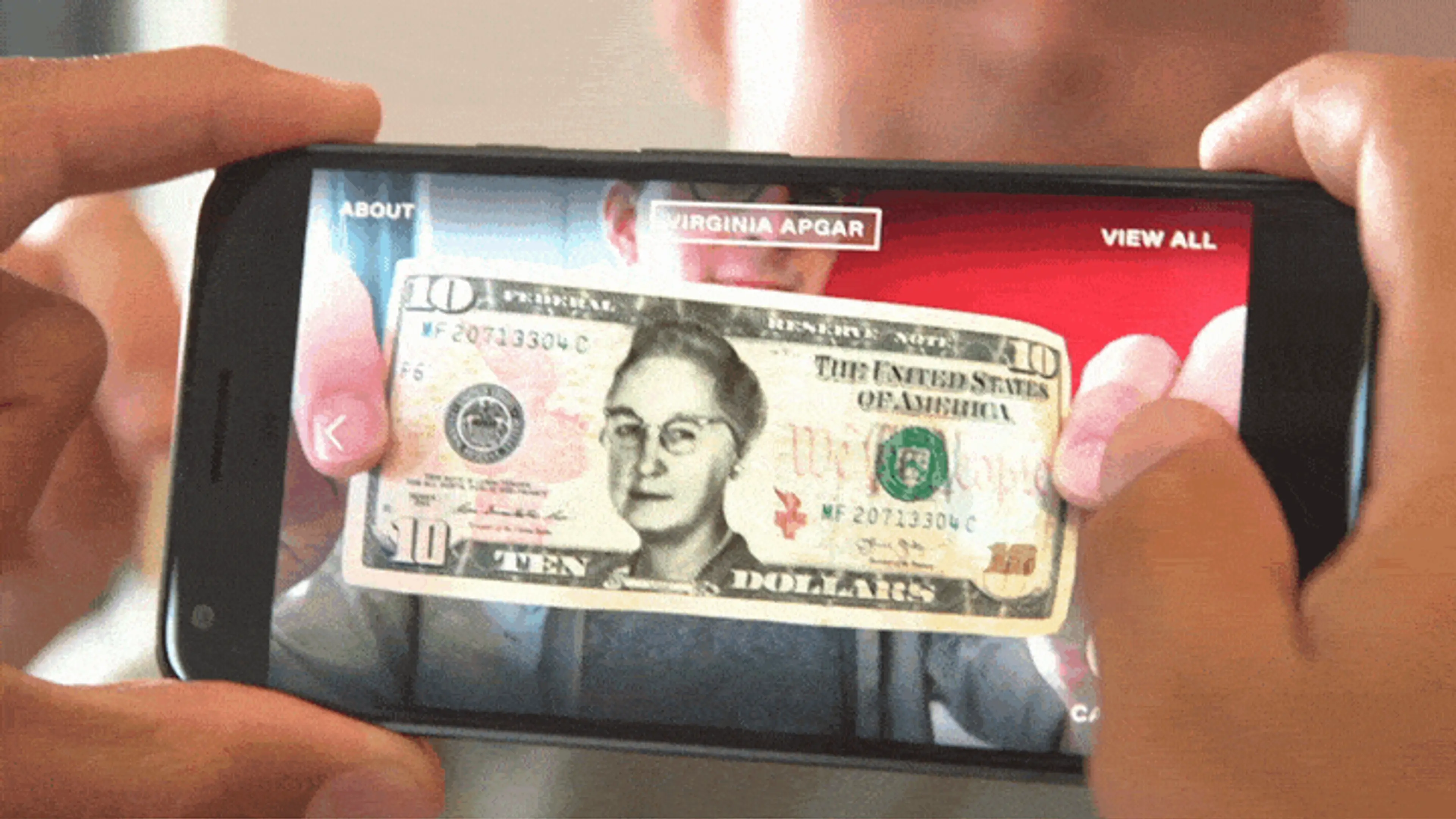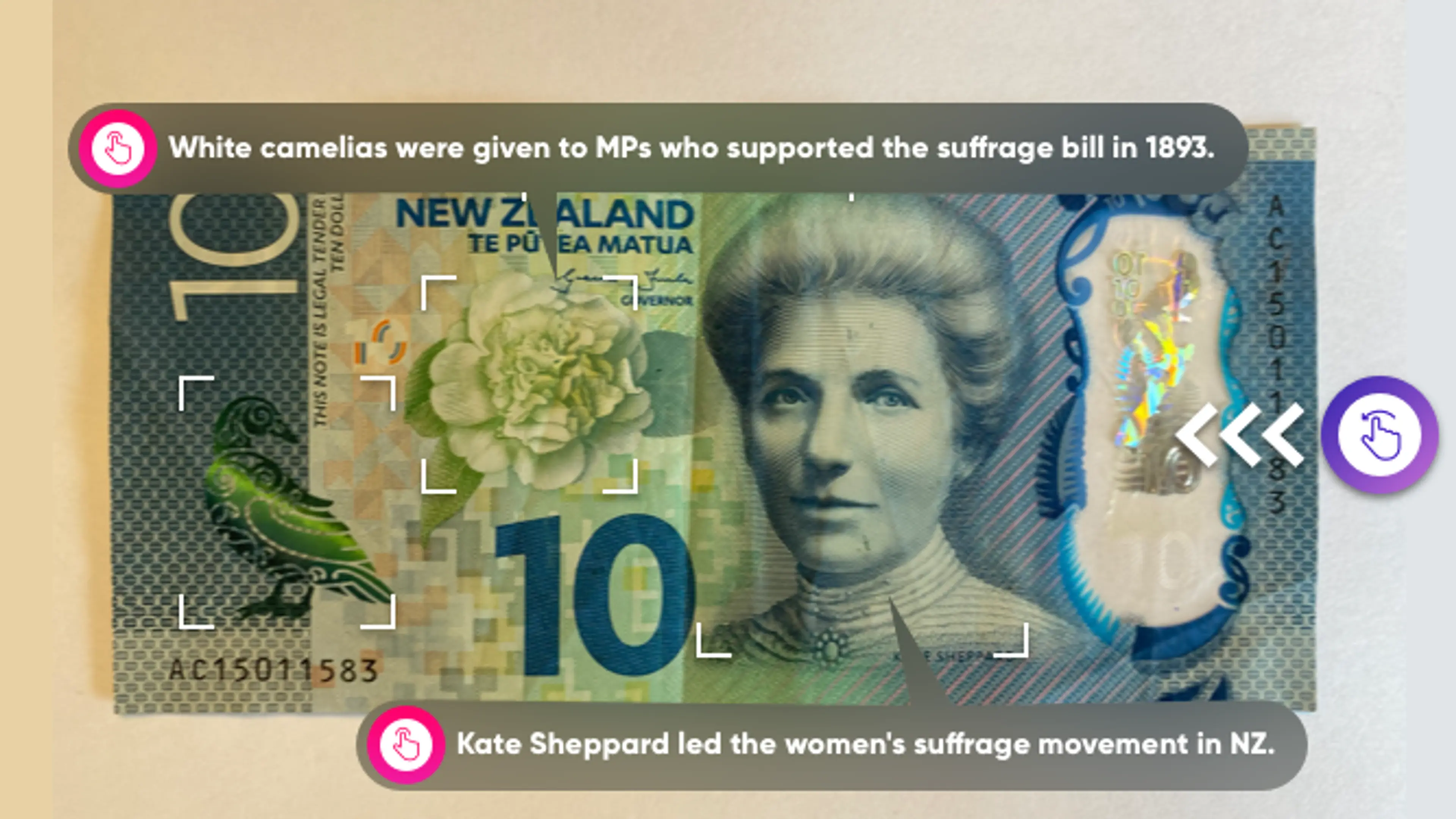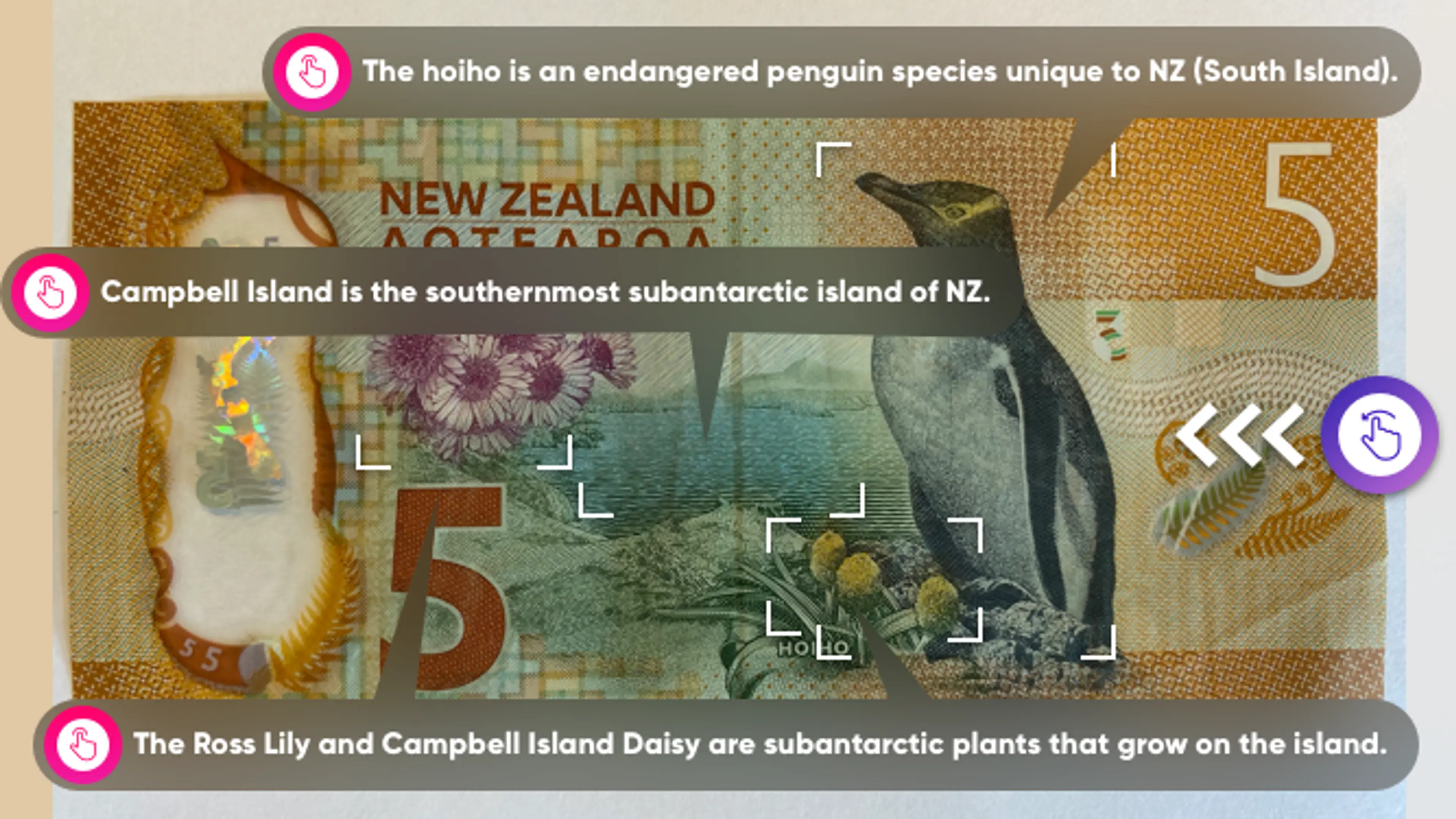Heads up: Our Ideas Factory has been refreshed, levelled up, and grown-up into Alphero Intelligence. Some of our old posts are pretty cool tho'. Check this one out.

- How can we take something that everyone has on them, and turn it into an educational augmented reality experience?
- We were inspired by Google's Notable Women experiment, and wanted to recreate it for New Zealand users.
- What can we learn from some of the challenges we faced, so that we can overcome them easily in future experiments?
Augmented reality (AR) offers endless opportunities when it comes to educational tools and applications. Designers and developers worldwide have barely scratched the surface.
We were particularly inspired by Google’s collaboration with the Notable Women Project in 2018, spearheaded by former Treasurer of the United States Rosie Rios. If you’ve ever looked at US dollars, you may have noticed a distinct lack of female faces. The Notable Women experiment used AR technology to replace the existing faces on US banknotes with those of famous, historical, female figures.
Intrigued, we wanted to experiment with mobile AR technologies to see for ourselves how we could create interesting and immersive experiences to learn more about New Zealand banknotes.
We sourced some banknote images and the information corresponding to each one from the Reserve Bank’s website, and designed an educational AR experience where users can interact with money in a new way.



It was important to us that the user be able to interact with elements of the note to learn about their money in an engaging way. We wanted the AR-enabled app to recognise user interactions such as taps and drags on the banknote as it appears on-screen, and be able to swipe through a carousel of the banknote’s older versions.
Designing for an AR space has different requirements to designing for a screen and, with this project, we’ve aimed to understand the process of providing a smooth user experience with “real life” space in mind.
All in all, it was a great project to get us thinking about user experience for augmented reality. ARKit was consistently able to recognise and track the banknotes quite well, provided they were relatively flat. We were able to track images by simply adding them to the project in a specified resource group and configuring the AR view to look for those images. The main challenge was connecting the AR world to the screen space; identifying the correct markers in order to display content over it. In future, a possible solution for improving the object tracking could be to keep a record of the notes’ physical dimensions and locations of their features, and refer to this when scanning notes using the mobile app.

